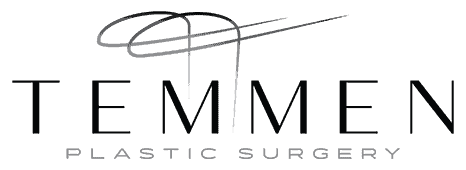Surgical Rhinoplasty
Traditional rhinoplasty is a surgical procedure performed when fairly large changes to the nose are needed or desired. Surgical rhinoplasty is often performed through an “open approach” where a small incision is made at the base of the nose, but can also be performed through a “closed approach.” Whether open or closed, the nasal bones, cartilage, and musculature can then be changed to produce a more aesthetic result. Surgical rhinoplasty is often performed to refine or reduce the overall size of the nose and, in those cases, involves reductive techniques such as reducing a bump on the bridge of the nose, refining the nasal tip, or making the width of the nose smaller. Although results may take longer to appear, surgical rhinoplasty is the only procedure capable of significantly altering the shape and size of the nose permanently. It is also used to correct internal and functional issues such as breathing impairments. Rhinoplasty surgery is usually performed under general anesthesia and the length of time varies based on the level of complexity and the patient’s desires. Due to the surgical techniques utilized and resulting changes from the procedure, recovery involves more bruising and swelling as compared to nonsurgical rhinoplasty. There is not a predetermined age requirement for a surgical rhinoplasty although it is recommended that a patient reach facial skeletal maturity before considering surgery. This typically occurs around 14 years of age at the earliest for girls and later for boys. The cost of traditional or surgical rhinoplasty varies by region of the country but usually starts around $5,900 to $6,900. A traditional rhinoplasty is the ideal procedure for patients interested in permanently refining the shape and size of the nose in a significant way.
Nonsurgical Rhinoplasty aka Liquid Rhinoplasty
Nonsurgical rhinoplasty, also known as liquid rhinoplasty, is the term given to the alteration of the appearance of the nose using dermal fillers and/or a person’s own fat. In general, liquid rhinoplasty is used to cover or camouflage areas of the nose and is thus used for augmentation or enhancement of certain features. Liquid rhinoplasty can be used to cover bumps, define the tip of the nose, help correct asymmetries, and/or add overall volume. Due to injections occurring within the skin, surgeons are able to contour the nose in a detailed and precise manner. Nonsurgical rhinoplasty does not correct functional issues as the filler or fat is injected only in the superficial layers of the nose and does not impact the nasal passages or airways. General anesthesia is not required for this procedure which allows patients to monitor progress and give personal feedback throughout in order to achieve optimal results. Because the procedure does not involve surgery, results can be seen immediately with practically no down time. Although results are immediate, the enhancements from dermal fillers fade over time and results typically only last for up to two years. While appealing in many ways, nonsurgical rhinoplasty is limited in scope and duration of results. Patients interested in temporarily camouflaging certain aspects or making subtle refinements in the shape of the nose may be a good candidate for liquid rhinoplasty. The cost of a nonsurgical rhinoplasty varies, but averages around $500-$700 per syringe of dermal filler used. The price of a liquid rhinoplasty using liposuction and fat transfer varies significantly depending on if the procedure is performed under local or general anesthesia, the amount of liposuction performed, and other associated procedures.
If you would like more information on either surgical or nonsurgical rhinoplasty, call today to schedule a consultation with Dr. Traci Temmen in Tampa, Florida. During the consultation you will have a chance to discuss your areas of concern and decide which treatment option is best for you!






 While labiaplasty and vaginal rejuvenation are both surgical procedures of the female genitalia, they differ in several ways. Labiaplasty surgery is designed to reduce the size of the labia minora in order to decrease discomfort and improve cosmesis. Vaginal rejuvenation surgery is a reconstructive procedure that tightens the vaginal opening and vaginal canal.
While labiaplasty and vaginal rejuvenation are both surgical procedures of the female genitalia, they differ in several ways. Labiaplasty surgery is designed to reduce the size of the labia minora in order to decrease discomfort and improve cosmesis. Vaginal rejuvenation surgery is a reconstructive procedure that tightens the vaginal opening and vaginal canal. About Dr. Temmen
About Dr. Temmen Virtual Consultation
Virtual Consultation Testimonials
Testimonials Blog
Blog